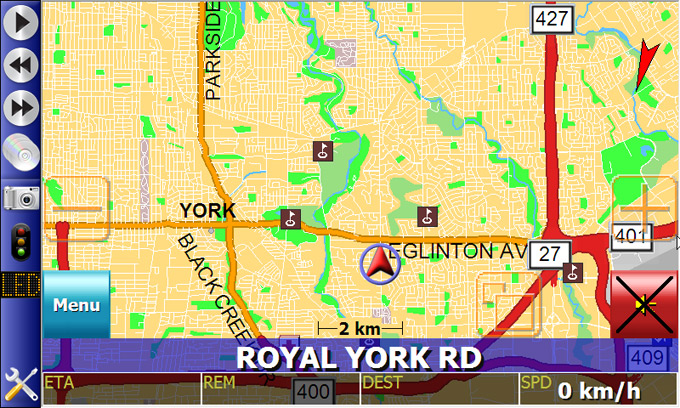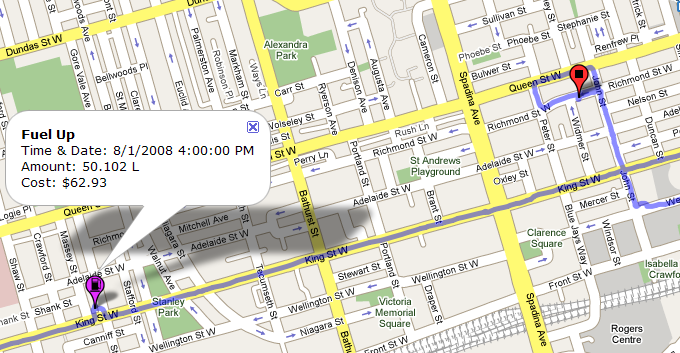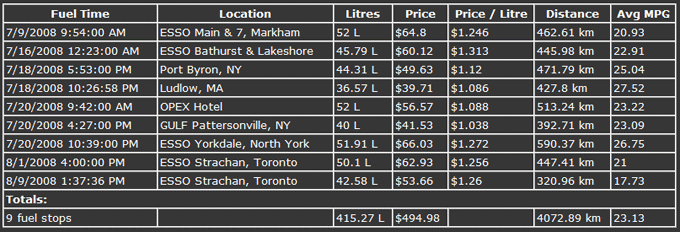
- Introduction
- Part 1 - Installation of the Car PC
- Part 2 - Adding a Rear-View Camera
- Part 3 - Time for some Software!
- Part 4 - An LED message sign
- Part 5 - Voice Commands
- Part 6 - Phone Integration
- Part 7 - XM Radio Integration
- Part 8 - Permanent Internet
- Part 9 - Front Camera
- Part 10 - Digital Dash
- Part 11 - Shuttle Jog Wheel
- Frequently Asked Questions
The Software
I quickly found out, as I researched options for my car PC, that there are a ton of software packages out there, all designed to make your car PC as smooth to use as possible. Some are free. Others are $200 or more. But none of them are all that great, in my opinion.The feature that I will be using most in a car PC is navigation. The nav has to be quick, easy, fully featured, and it has to look good. Since Nav is expensive, most of the commercial Car PC "Front-End" vendors don't offer the Nav functionality in their demo, and the freeware ones usually don't even support it, at least not that well.
The two main competitors in the "Front-End" market are StreetDeck ($200) and Centrafuse ($250). StreetDeck uses Microsoft MapPoint for it's navigation, and Centrafuse uses Destinator. But neither one seemed all that good. StreetDeck, I discovered, hasn't been updated in a long time and many customers are frustrated with the bugs in the product. Apparently it crashes frequently. Centrafuse, on the other hand, is more current, but even their "version 2.0 beta" didn't have all the features that StreetDeck did. Anyway, after much fussing around with both pieces of software, I decided to go a different route.
I decided to go homebrew for most of my non-nav needs (shocking, I know). I use iGuidance for navigation -- it's a very nice program. It works flawlessly. For my non-navigation needs, I ported some of my home software to the car, and consolidated some other features into a piece of software I (predictably) called "AvCar".
AvCar is very much a work in progress. Right now, it manifests itself as a thin bar on the left side of the screen, and automatically pushes iGuidance out of the way.
The buttons are easy to hit and easy to see and don't interfere with the navigation software.

So here's what I've got added to the software so far:
GPS Tracking that syncs to a Google map online:
As I drive, my software keeps a track in a database. When an internet connection is found (such as when I arrive home), the tracks are synced with a remote database so that I can view them online, on a private website:
The tracks are accurate enough that you can even see exactly where I was parking:

Fuel Costs and MPG tracking
Every time I gas up, I enter the total cost and total litres. I can do this later if I forget to do it at the time. The database will mark these points on a map and calculate my fuel economy for the duration of the run.
This information is presented as a MPG chart:

Speed-Controlled Volume
Many newer cars have this feature built in, but mine does not. So I added it. The music and nav volume increases as I drive faster, to compensate for road noise. I use the GPS as source for how fast I am driving.Other Stuff
- Displays reverse camera
I can display the reverse camera on the screen at any time - Auto-Hibernate
Hibernates the system 10 minutes after power is lost (car is switched off). You'd think Windows' built-in feature to do this would be adequate. You'd be wrong. - Music Control
I can control my music (play, pause, next & prev track) without leaving the application I am in - Voice Notes
I frequently get feature ideas or experience bugs while driving, but forget about them by the time I'm back home. The voice note feature lets me record a quick memo to myself, which shows up on my desktop computer automatically when I get back!